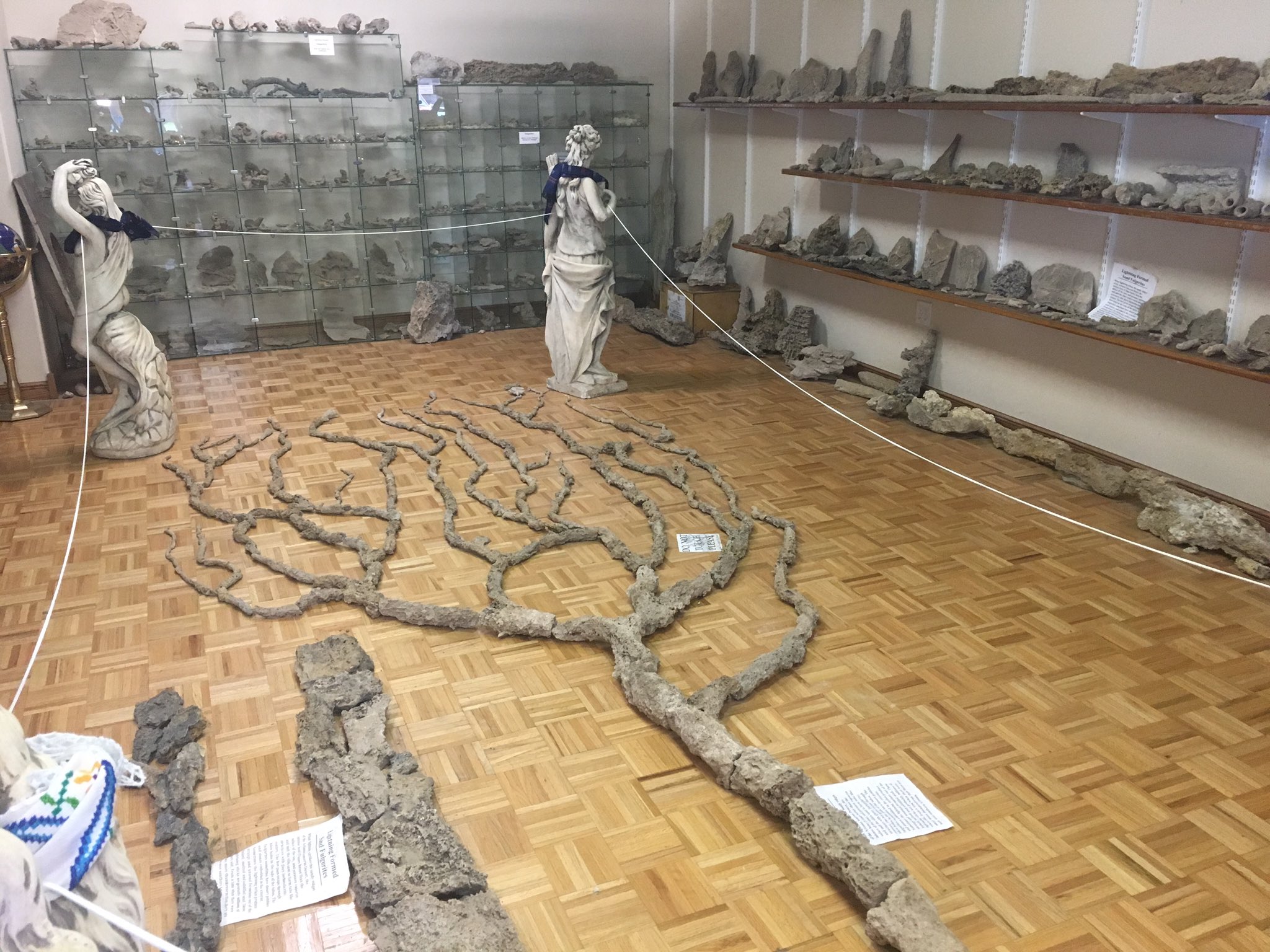Lightning is a fascinating yet dangerous force of nature!
With a temperature that can reach up to 36,000 degrees Fahrenheit, the heat from a strike is hotter than the surface of the sun. So what happens when that intense energy hits the ground?
Houses can catch fire and trees explode!
When lightning strikes the sandy soil, a chemical reaction takes place.
Sand melts at a temperature of 3,090 degrees Fahrenheit, so the heat from the lightning quickly turns it into a liquid. Much cooler surrounding air and sand cools it and it turns into a glass-like substance called fulgurite!
Phil Whitmer, Director of Joshua Tree Earth and Space Museum in Lakeville has collected fulgurite from all over!
“We’ve collected them from several different locations in Michigan, couple locations in Indiana, Hawaii, California, Arizona,” Whitmer said.
Right now he is displaying tons of fulgurite at the Lakeville museum!
“Usually it’s like a tube shape but we’ve been finding all kinds of weird shapes. Sometimes they’re hallow, sometimes they’re solid. Generally it’s a tube, sometimes with branches coming off of it," Whitmer said.
These formations can be found anywhere from the sand dunes along Lake Michigan to the soil in your own backyard.
It does not take an expert to find one - you just have to know what to look for.
Todd Miller, who lives in South Bend, found fulgurite on his walk to get ice cream!
You, too, can find your own piece of this weird science!
Next time you see lightning strike, look around where it hit after the storm has passed and you, too, might find a chunk of rare fulgurite of your own.
If you would like to see fulgurite up close, head over to the Joshua Tree Earth and Space Museum in Lakeville, IN.















